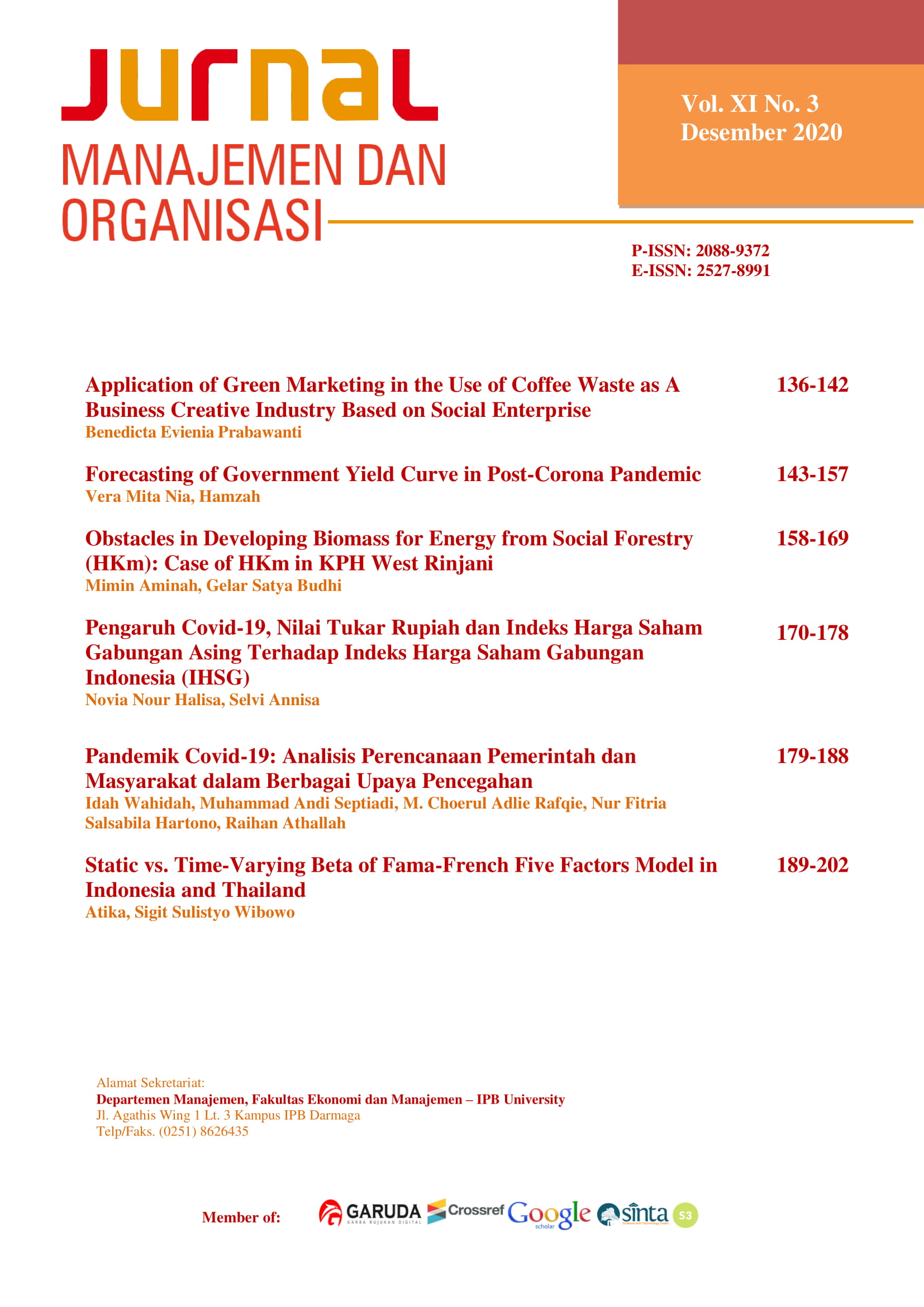Obstacles in Developing Biomass from Social Forestry (HKm) Case of HKm in KPH West Rinjani
Abstract
In the development of new and renewable energy (EBT), biomass is one alternative energy source that will be developed. Apart from the industrial plantation program (HTI), the development of energy forestry has the opportunity to be developed through forest farmer groups and other schemes, such cooperative. Energy forestry can be defined as a forest producing biomass for energy. At present, the forest land managed by the community in the form of HKm (community forest) has reached 244,434.67 ha in 2018, and will continue to increase in the following years. Energy forestry development on HKm land in West Lombok’s Forest Stakeholder Unit (KPH) is a supposition, which is an effort to extent the development of energy forestry. Interpretative Structural Model identifies problems in developing energy forestry in HKm land. Energy forestry on HKm land in West Lombok’s KPH can basically be developed by reducing obstacles encountered. These obstacles include the strict SKAU, lengthy to harvest, uneasy marketing, agricultural land competition, disrupted daily needs, and lack knowledge of conservation. The results of ISM processing show that the obstacles needed firstly to be addressed are strict SKAU and Lack knowledge of conservation, which are followed by agriculture land competition, subsequently disrupted daily needs, uneasy marketing, and lengthy to harvest. In order to conquer the initial obstacles, there is a need to facilitate issuing SKAU without reducing supervision for security. At the same time, it is important to transfer knowledge of conservation with a pilot project.
Downloads
Copyright (c) 2020 Mimin Aminah, Gelar Satya Budhi

This work is licensed under a Creative Commons Attribution 4.0 International License.


.jpg)




